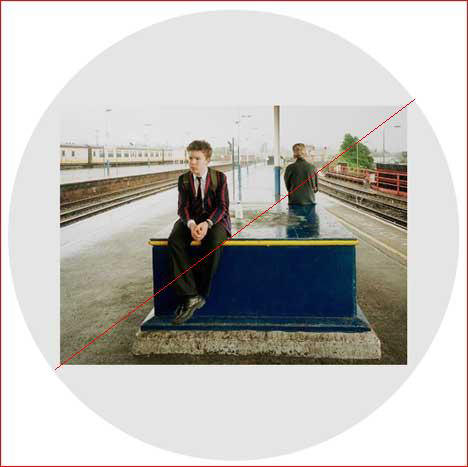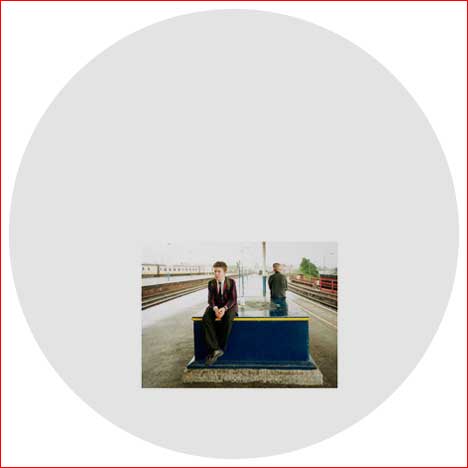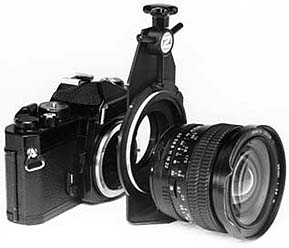Mount Matching
Wouldn’t it be great to be able to use lenses from one camera system on camera bodies from another? How about using lenses from one format on another completely different type? Pretty cool!
In fact therearea couple of camera brands that provide this capability. Contax 645 owners can use their lenses on Contax N series 35mm cameras, with full aperture automation and metering capability.Pentax 67owners can use their lenses on aPentax 645body, again with full auto aperture and metering capability.
But, that’s it. No other manufacturer provides cross-platform compatibility, and certainly none is interested in cross-brand matching.
Movements and Mounts
 Fig #1
Fig #1  Fig #2
Fig #2
While people prefer rectangular images, lenses create circular ones. Whether its a square or a rectangle, the diagonal of the film (the hypotenuse) is typically made just slightly smaller than the diameter of the circle projected by the lens, (Fig #1 ‚ red diagonal line).
If one wants to have lens movements, such as a rising front for perspective control, the lens must project an image circle that is appreciably larger than the film diagonal. This normally requires the use of a specialized perspective control lens that by design projects a large enough image circle (Fig #2.).
Another way of doing this would be to take a lens designed for a larger format, say a 6X7 lens, and use in on a 645 camera. Or take a 645 format lens and use it on a 35mm camera. These wouldn’t even need to be from the same manufacturer.
This is what the German firm ofZörkendörferhas done‚ and this overview is of two of their large assortment of magical adaptors and accessories‚ thePanorama Shift Adaptorand thePro Shift Adaptor.
Zörk?
Zörk Film and Phototechnic, USis the American sales and marketing arm of a unique company. Zörk specializes in makinglens mount adaptors. A wide range of 35mm and medium format cameras and lens can be mated with one of these. All aperture, autofocus and meter coupling is lost, but there are situations where the versatility provided compensates for the slower and more awkward usage.
As we’ve seen above, since the image circle produced by a medium format lens is much bigger than that needed by a 35mm piece of film, it’s also possible to create a mount that permits the lens to move up or down, and with a twist‚ left or right, and thus in essence produce a perspective control (shift) lens. Let’s see how these work.
Other sources of straight lens adaptors that you may want to check out are,CameraQuest,NovoFlexanda Japanese company. These adaptors do not provide for any camera movements the way theZörkadaptors do.
A Little Shifty Math
Do you remember Grade 8 geometry?The square on the hypotenuse is equal to the sum of the squares of the other two sides. This tells us that the diagonal of a piece of 35mm film is nominally 43mm. Therefore a lens that projects an image circle of that diameter will suffice. But if you attach a 645 format lens you now have a lens that projects an image circle that’s nominally 75mm in diameter. This is what is represented inFig #2above. This gives us 32mm of additional image to move around in.
In the case of using a 67 lens on a 645 camera we have a 75mm film diagonal and a lens that produces an image circle with a 92mm diameter; an additional 17mm of leeway.
So What Can We Do With This?
Correct for converging verticals
Produce panoramic landscapes
Change the camera’s viewpoint (i.e. shooting into a mirror)
The use in correcting for converging verticals, especially when doing architectural work, is well understood. (See my article onCamera Movementsas well asIssue #2ofThe Video Journal). But it should be noted that perspective correction has become quite easy in Photoshop, and for occasional use this is a much less expensive solution than a dedicated shift lens or adaptor. Of course architectural and product photographs will continue to use large format and other equipment specially tailored for those tasks.
But taking two images, one with the lens shifted left and then the second with it shifted right, and then stitching them together, is definitely aided by the use of a shift lens, since the nodal point of the lens does not change the way it does when a panoramic head is used. Again, there is now specialized software that corrects for this, so there is more than one way of solving the problem.
Panorama Shift Adaptor
The ZörkPanorama Shift Adaptoris designed to not only allow you to use a medium format lens on a 35mm camera, but to turn it into a perspective control (shift) lens, as discussed above.

What lenses can you use, and with which cameras? Virtually every brand of 35mm camera is supported, including Canon, Contax, Konica, Leica R, M 42, Mamiya ZE, Minolta, Nikon, Olympus, Pentax, Ricoh, Rollei, Yashica and also movie and video cameras with C-mount fittings.
As for medium format lenses, Hasselblad, Mamiya 645, Pentacon Six and Pentax 6X7 and Pentax 645 lenses can be used. All you need to do is tell Zörk which lens type you want to fit on which body. Remember‚ it’s medium format lenses on 35mm cameras, not the other way around.
The adaptor itself is reasonably well designed and made. There is a micrometer knob that allows for very fine shift movements, and by squeezing a lever the lens can be quickly shifted through its range. Build quality isn’t quite up there with a major manufacturer’s product, but given the specialized nature of the product and limited size of the intended market it’s more than acceptable.
Pro Shift Adaptor
ThePro Shift Adaptorhas multiple uses. In its simplest application it allows for lenses from a larger format to be used on a smaller one; Pentax 67 lenses on a Pentax 645 for example, but with shift capability, just like thePanoramic Shift Adaptor. It’s a more basic device though and lacks micrometer movement control as well as a quick release for the shift mechanism. The shift is done by sliding the outer mount on a friction fit. A simple and serviceable solution, though a bit slow.

Now to the complicated part.
You can add a so-calledMulti Focus Systemwhich allows for the Scheimflug effect to be exploited in addition to shift. The fly in the ointment is that this acts as an extension tube, increasing the distance between the film plane and the lens, thus prohibiting infinity focus with ordinary lenses. The solution is to use an enlarging lens with suitable coverage. Unfortunately the minimum focal length that can be used is 90mm, so wide angle applications aren’t possible. This then becomes a somewhat specialized tool.
Pricing
ThePanorama Shift Adaptorsells for USD $499, for lenses from 645 systems (Mamiya, Pentax, Contax), and $549 for 6×6 and 6×7 system lenses (Hasselblad, Pentacon 6 / Exacta 66, Kiev, and Pentax 67).
ThePro Shift Adaptorcomes in various "flavors". The Pro-SA-P67 for Pentax 67 lenses on 645 bodies is $899. The ProSA-ZM (Zork mount) is for use with theMini Makro MountorMulti Focus System, which adds tilts and swings using enlarger lenses is $599. Zörk also offers a version for the Mamiya RZ67 which requires a large format lens with shutter as does the version for Hasselblad 500 and Rollei 6000 series cameras.
What To Do Next
If all of this has sparked some interest, especially after browsing theZörk web site, contact them for a quote on price and availability for the specific adaptor that you need. In the USA contactZörk USA, and in the rest of the worldInfo @ Zörk.
You May Also Enjoy...
Winter Wildlife
This page is one of three devoted to photography in Yellowstone National Park in winter.The other two pages are...Yellowstone in WinterandYellowstone Winter Landscapes Their Winter
